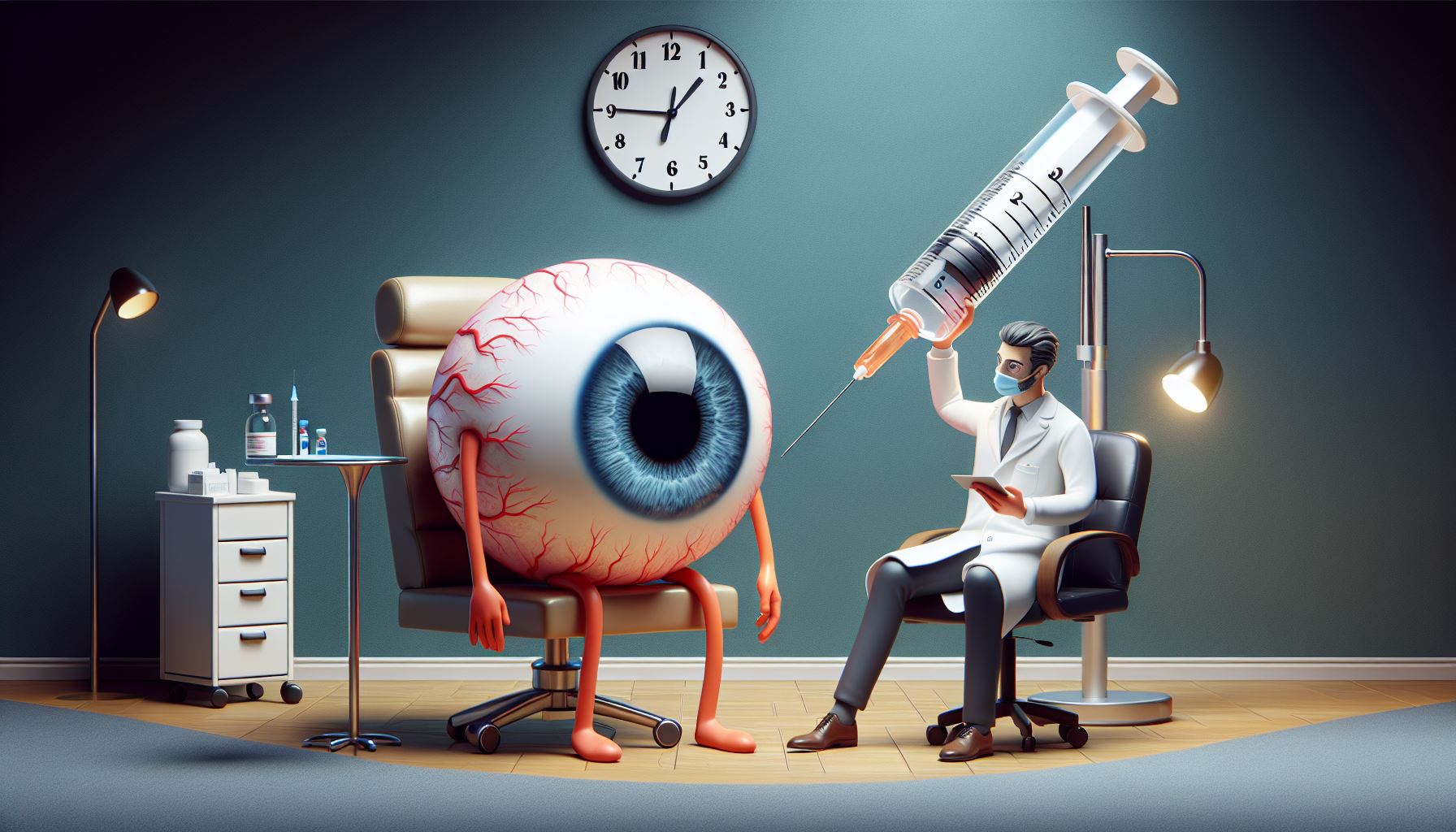
Wet macular degeneration is a condition that affects the retina and can cause vision loss. The condition is caused by the growth of abnormal blood vessels under the macula, leading to bleeding, fluid leakage, and vision disruption. There are several treatments available for wet macular degeneration, including anti-VEGF injections, photodynamic therapy, and photocoagulation.
Anti-VEGF injections are the first line treatment for all stages of wet macular degeneration. They work by blocking the growth signals that create new blood vessels. The drugs are administered through injections into the affected eye, typically every 4 to 6 weeks to maintain their effect. In some cases, these injections can partially recover lost vision as they cause the blood vessels to shrink and the fluid under the retina to be absorbed. The procedure is done in the doctor’s office, involves numbing the eye, and takes about 15 minutes. Possible side effects include infection, inflammation, bleeding, and retinal detachment. Some patients may regain lost vision, and improvements can be seen within a week, although some discomfort may follow the procedure.
The duration for which a patient needs to continue receiving anti-VEGF injections can vary based on several factors. Here are some considerations:
- Individual Response: Each patient’s response to treatment can differ. Some individuals may require injections for a shorter duration, while others may need longer-term therapy.
- Type of Macular Degeneration: The specific type of macular degeneration plays a role. For wet macular degeneration, which involves abnormal blood vessel growth, anti-VEGF injections are a common treatment1. These injections help reduce leakage and prevent further damage to the macula.
- Initial Treatment Phase: Typically, patients receive more frequent injections during the initial treatment phase. This phase aims to stabilize the condition and improve vision. It often involves monthly or bimonthly injections.
- Maintenance Phase: After the initial phase, patients transition to a maintenance phase. During this period, the frequency of injections may decrease. Some patients continue with injections every 2 to 3 months, while others may need them less frequently2.
- Long-Term Management: Macular degeneration is a chronic condition, and long-term management is essential. Patients may need ongoing injections to sustain visual gains and prevent disease progression.
- Regular Monitoring: Regular follow-up visits with an ophthalmologist are crucial. The doctor assesses the patient’s response, monitors disease activity, and adjusts the treatment plan accordingly.
Photodynamic therapy is another treatment option, though less common than anti-VEGF injections. It involves injecting a medicine called verteporfin into the arm, which then travels to the eye’s blood vessels. A special laser activates the medicine, causing the problem blood vessels to close and stop leaking. This treatment may require repeated sessions.
Injections with medications like brolucizumab, aflibercept, ranibizumab, and bevacizumab can stabilize or improve vision in many patients. The treatment involves a series of injections, typically spaced every four to six weeks, with a possible reduction in frequency over time. Patients may feel nothing, slight pressure, or moderate discomfort during the injection, with possible temporary soreness and foggy vision post-procedure. While rare, there’s a low risk of serious complications such as retinal detachment or endophthalmitis, with specific symptoms to watch for.
The FDA has approved Vabysmo (faricimab-svoa) for treating wet AMD. Vabysmo requires fewer injections compared to existing treatments, with an initial regimen of four monthly injections. After the initial monthly injections, further treatment may be every 2, 3, or 4 months, depending on the patient’s response. The medication aims to improve vision and potentially lower treatment burden over time.
The coverage of macular degeneration injections by health insurance plans can vary significantly. Here are some factors to consider:
- Type of Insurance: Different insurance plans (such as private, employer-sponsored, or government programs like Medicare) have varying policies regarding coverage. Some plans may cover a significant portion of the cost, while others may provide limited coverage.
- Medical Necessity: Insurers typically evaluate whether the treatment is medically necessary. If a patient’s condition warrants anti-VEGF injections for wet macular degeneration, insurance is more likely to cover the costs.
- Prior Authorization: Some insurance companies require prior authorization before approving coverage for specific treatments. Patients and their healthcare providers may need to submit documentation to demonstrate the necessity of these injections.
- In-Network vs. Out-of-Network Providers: Coverage may differ based on whether the patient receives injections from an in-network or out-of-network provider. In-network providers are usually preferred for better coverage.
- Deductibles and Copayments: Patients should check their insurance policy for details on deductibles (the amount they must pay before insurance kicks in) and copayments (the portion they pay out of pocket for each visit).
In conclusion, wet macular degeneration injections are an effective treatment option for patients with wet macular degeneration. Anti-VEGF injections are the most common treatment option and can partially recover lost vision. Photodynamic therapy is another treatment option, though less common than anti-VEGF injections. Injections with medications like brolucizumab, aflibercept, ranibizumab, and bevacizumab can stabilize or improve vision in many patients. The FDA has approved Vabysmo (faricimab-svoa) for treating wet AMD, which requires fewer injections compared to existing treatments and aims to improve vision and potentially lower treatment burden over time.
Here are five reputable sources that provide information on wet macular degeneration injections:
- Mayo Clinic: This website provides a comprehensive overview of the diagnosis and treatment of wet macular degeneration, including information on photodynamic therapy and anti-VEGF shots1
- WebMD: This website provides an overview of wet age-related macular degeneration, including information on the different types of anti-VEGF injections used to treat the condition2
- Healthline: This website provides information on the FDA-approved injectable medication for wet age-related macular degeneration and diabetic macular edema3
- BrightFocus: This website provides information on the different types of injections used to treat wet macular degeneration, including brolucizumab, aflibercept, ranibizumab, and bevacizumab4
- Healthline: This website provides information on the benefits, risks, and results of anti-VEGF injections for wet macular degeneration5





